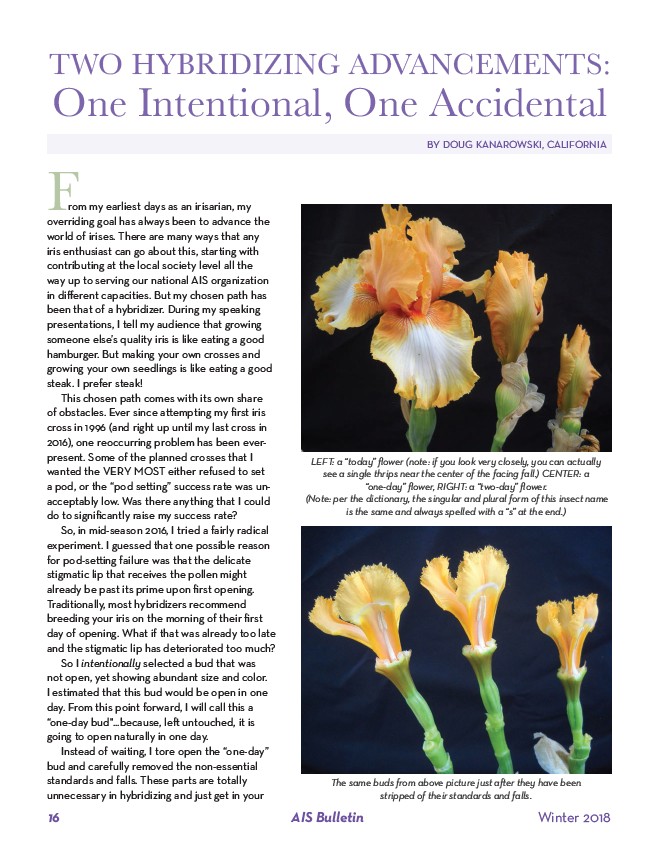
TWO HYBRIDIZING ADVANCEMENTS:
One Intentional, One Accidental
From my earliest days as an irisarian, my
overriding goal has always been to advance the
world of irises. There are many ways that any
iris enthusiast can go about this, starting with
contributing at the local society level all the
way up to serving our national AIS organization
in different capacities. But my chosen path has
been that of a hybridizer. During my speaking
presentations, I tell my audience that growing
someone else’s quality iris is like eating a good
hamburger. But making your own crosses and
growing your own seedlings is like eating a good
steak. I prefer steak!
This chosen path comes with its own share
of obstacles. Ever since attempting my first iris
cross in 1996 (and right up until my last cross in
2016), one reoccurring problem has been everpresent.
Some of the planned crosses that I
wanted the VERY MOST either refused to set
a pod, or the “pod setting” success rate was unacceptably
low. Was there anything that I could
do to significantly raise my success rate?
So, in mid-season 2016, I tried a fairly radical
experiment. I guessed that one possible reason
for pod-setting failure was that the delicate
stigmatic lip that receives the pollen might
already be past its prime upon first opening.
Traditionally, most hybridizers recommend
breeding your iris on the morning of their first
day of opening. What if that was already too late
and the stigmatic lip has deteriorated too much?
So I intentionally selected a bud that was
not open, yet showing abundant size and color.
I estimated that this bud would be open in one
day. From this point forward, I will call this a
“one-day bud"...because, left untouched, it is
going to open naturally in one day.
Instead of waiting, I tore open the “one-day”
bud and carefully removed the non-essential
standards and falls. These parts are totally
unnecessary in hybridizing and just get in your
BY DOUG KANAROWSKI, CALIFORNIA
LEFT: a “today” flower (note: if you look very closely, you can actually
see a single thrips near the center of the facing fall.) CENTER: a
“one-day” flower, RIGHT: a “two-day” flower.
(Note: per the dictionary, the singular and plural form of this insect name
is the same and always spelled with a “s” at the end.)
The same buds from above picture just after they have been
stripped of their standards and falls.
16 AIS Bulletin Winter 2018